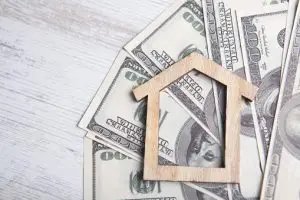When is the Best Time to Refinance Your Home?
When is the Best Time to Refinance Your Home?
Refinancing your home is not a one size fits all thing. When you are looking to refinance, it’s best to do it when federal interest rates drop and you can get a lower interest rate. It will cost some money in fees and closing costs but overall saves you money over the length of your loan term or switch from fixed-rate to adjustable-rate refinancing purposes; these are all good reasons for refinance as well.
What you Should Keep in Mind
You should also keep in mind that even though savings might outweigh the fees at first, if done long enough your savings will go back into being outmatched by them again with time, which is where break-even point comes into play for what makes sense on whether or not there would be reason make such an action like this down the road. It’s always best to talk to a lender to find out when is the Best Time to Refinance Your Home.

Home Refinance
The Break-Even Point.
A break-even point is the time period for which you spend more; than your monthly payment to cover the refinancing of a home loan. If you are still planning to live in that house after that 42 month period; then it will be worth refinancing. For example, let’s say it costs $6K to refinance and, than you pay an extra $150 a month on top of what originally expected from this mortgage by saving money down the road later on when selling; then in 40 months or so (after those 42 months), theoretically speaking; there would be no savings at all, because not only did we save nothing by going into debt early but also owed even more money!
Planning to Stay in Your Home.
If you plan to stay in your home for a while; then the best time to refinance is when the interest rate is low. Interest rates, however, are largely beyond a borrower’s control. For factors within their control; they should try and wait until they have an adequate financial situation before refinancing their mortgage loan. When lenders are looking at someone’s credit score, DTI (debt-to-income) ratio as well as analyzing property value during preparation of an offer on your behalf. Making sure that you’re financially sound will help get the best deal possible – this can only happen if it makes sense for those three aspects of your financial status like income level or DTI ratio etc..

When is the Best Time to Refinance Your Home?
Refinance Your Home with a Low APR.
The lender will provide estimated loan terms such as payment amounts or projected closing costs. Depending on what looks good based off these factors by taking into account. The specific numbers that go along with each potential financing scenario. This includes borrowers’ preferences like number of years available to pay back debt after purchase price repayment period amount borrowed option chosen down-payment made upon purchase.
The Appraisal.
When you refinance your home; banks will appraise the home to make sure that its worth more than what is owed on your existing loan. Appraisal’s determine how much of a percentage of your mortgage amount is paid based on; how much the home is actual worth, and this ratio is called LTV (Loan-to-Value) or Loan To Appraisal Value. It goes in percentages for high values mean lower LTV ratios meaning; better chances to avoid PMI insurance with new loans.
Conclusion.
If you have your debt to income ratio, the length of time between purchases, and a low FICO score in check then it is a good time for you to refinance. You should wait for lower federal interest rates and apply for multiple loan estimates from lenders. When all this is together it will be a great time to refinance!
